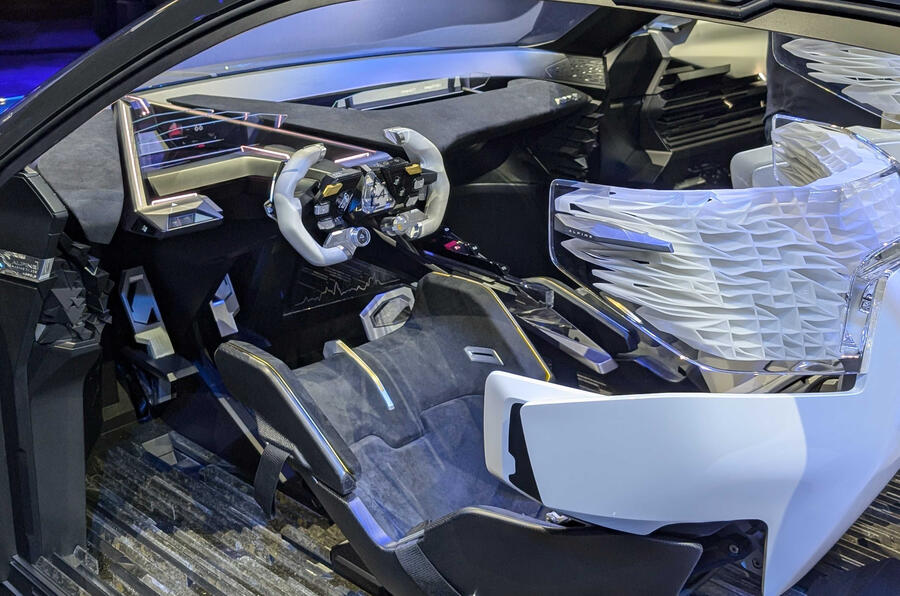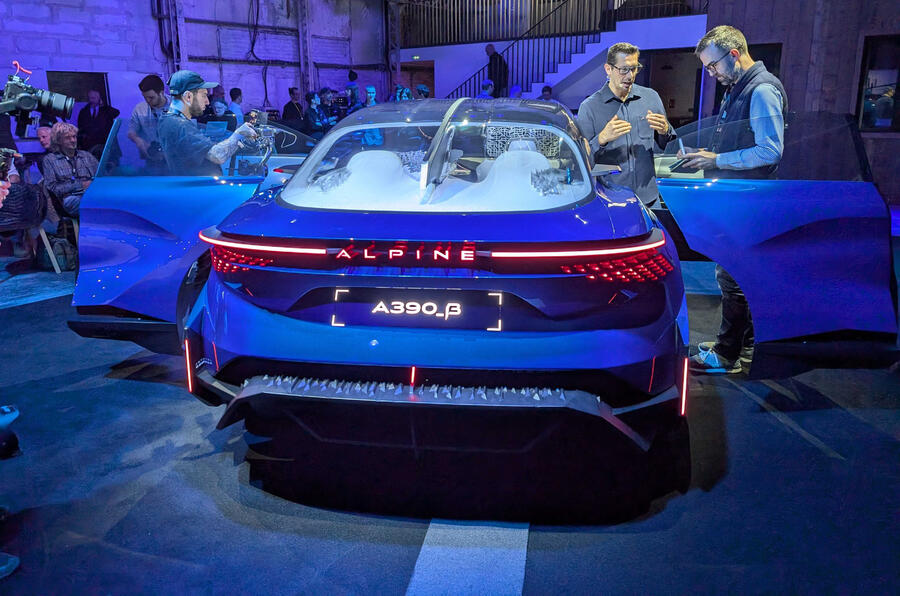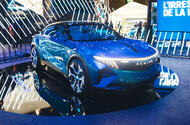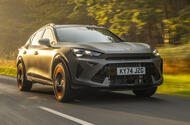Production model will feature tri-motor set-up and active torque vectoring for “lightweight” feel
The Alpine A390 Beta electric crossover concept has been conceived as “a bigger A110 for five” that pairs a futuristic fastback design with best-in-class driving dynamics.
The concept will spawn a production car in 2025 that will use the Renault Group’s Ampr Medium EV platform (making it a relation of the Renault Megane E-Tech) and be positioned as a rival to the likes of the BMW iX2 and Tesla Model Y.
Alpine has benchmarked the Porsche Macan-sized crossover against its own four-cylinder sports coupé and claims its tri-motor powertrain (one at the front and two at the rear) combines with active torque vectoring to give the “driving dynamic of a lightweight car”. This set-up, confirmed Alpine CEO Philippe Krief, will also be adopted by the upcoming A110 EV.
Chief designer Antony Villain said: “Most EVs are about just driving straight. Here the driving sensation is developed similar to the A110. This is mainly down to the torque vectoring.”
The A390 Beta – inspired by the 2022 Alpenglow concept that serves as “the mother of all future Alpine cars” – is described as 80% production-ready, with Villain confirming the front end will remain relatively unchanged, including the Le Mans-inspired central fin.
Elsewhere, the concept’s alloys, designed in the shape of a snowflake (“both strong and light”), will light up blue when active torque vectoring is occurring. It has been confirmed that this will make production.
Radical elements that won’t make production include the rear-hinged doors, the rear light strip-cum-spoiler (which can extend by up to 80mm to reduce drag) and the radical Formula 1-inspired interior – although these all point to “the future of the brand”, said Villain.

That interior is centred on the hydraulically assisted driver’s seat, which can switch from the standard driving set-up to one that mirrors an F1 bucket. The pedals also raise, while the steering wheel transforms from wide to narrow and displays extra information such as the weather.
The cabin has also been designed for the front passenger to “share the driving experience”. As well as getting the same type of seat (although without the ability to change position), a panel is fitted to the dash displaying upcoming road information. This means, according to Villain, that they are “no longer a passenger, and now a co-pilot”.
Elsewhere, the interior’s Alps theme can be seen in the white (snowy) seats and in the floor, which has been designed to mimic stones found on an Alpine pass. These light up when the car is moving, with beams travelling from front to rear to give the feeling that you’re floating over the road.

Alpine wouldn’t be drawn on the battery, range or power the production car might possess, but Robert Bonetto, vice-president of Alpine Engineering, told Autocar it would “not aim to be the fastest” or the rangiest car of its type, because increasing the battery size would add weight. Instead it will offer “the right levels” and “be something that is still competitive”, he said.
When it does arrive, it will come with a hefty price tag, said Krief – below £100k but expensive enough to keep volumes lower than rivals’.
Source: Autocar RSS Feed


